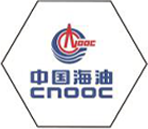
Dec . 05, 2024 14:59
Back to list
صمام تنظيم الضغط
Understanding Pressure Regulating Valves
Pressure regulating valves (PRVs) are crucial components in various industrial and commercial applications, ensuring that the pressure of fluids is maintained within desirable limits. These valves are designed to automatically adjust and manage the pressure of gases or liquids, offering both safety and efficiency to systems that rely on precise pressure control.
What is a Pressure Regulating Valve?
A pressure regulating valve is a mechanical device that modulates the pressure of a fluid, whether it’s gas or liquid, flowing through a pipeline or system. The primary function of a PRV is to maintain a downstream pressure that remains constant regardless of variations in upstream pressure or changes in flow rate. This consistency is vital in applications where pressure fluctuations can lead to equipment failure, inefficient operation, or safety hazards.
How Does It Work?
The basic operation of a PRV involves a spring-loaded mechanism that reacts to changes in pressure. In essence, the valve opens or closes depending on the pressure conditions in the system. When the downstream pressure exceeds a predetermined setpoint, the valve will close slightly to restrict flow, thereby reducing the pressure. Conversely, if the downstream pressure drops below the setpoint, the valve opens to allow more flow, increasing the pressure as needed.
Many pressure regulating valves come equipped with adjustable set points, allowing operators to fine-tune the desired pressure levels for their specific applications. This flexibility is particularly important in systems where different processes might require varying pressure levels.
Applications of Pressure Regulating Valves
PRVs are used in a wide range of applications across various industries, including
1. Water Systems In municipal water supply systems, PRVs help maintain constant pressure to prevent water hammer and protect pipe infrastructure.
2. Gas Distribution In natural gas distribution networks, PRVs regulate the pressure of gas before it enters residential or commercial systems, ensuring safe and efficient delivery.
.
4. HVAC Systems Heating, ventilation, and air conditioning systems often utilize PRVs to manage the pressure of refrigerants and ensure efficient system operation.
صمام تنظيم الضغط

Types of Pressure Regulating Valves
There are several types of pressure regulating valves, each suited for different applications
- Direct Acting PRVs These valves use a diaphragm or piston directly linked to the valve seat. They are typically used for lower flow rates and pressures.
- Pilot Operated PRVs These more complex devices use a small pilot valve to control the main valve. They are suitable for higher flow rates and provide greater sensitivity and precision.
- Electronic PRVs These advanced valves use electronic sensors and control systems to adjust the pressure dynamically. They are ideal for systems that require real-time adjustments based on varying operational conditions.
Benefits of Using Pressure Regulating Valves
1. Safety By controlling pressure, PRVs protect equipment and personnel from potentially dangerous over-pressure situations.
2. Efficiency Maintaining optimal pressure levels enhances the efficiency of systems, leading to energy savings and reduced wear on equipment.
3. Performance Consistent pressure ensures that processes operate within their designed parameters, leading to better quality outputs and reduced downtime.
4. Cost Savings By preventing damage to equipment and minimizing energy consumption, PRVs can lead to significant long-term cost savings.
Conclusion
Pressure regulating valves are integral to ensuring the reliable and safe operation of fluid systems across a multitude of industries. Their ability to maintain consistent pressure levels protects infrastructure, enhances efficiency, and improves overall system performance. As technology advances, the development of smarter, more efficient PRVs continues, promising even greater benefits in the future. In any application where pressure control is paramount, investing in high-quality PRVs is essential for operational success.
Next:
Latest news
-
Safety Valve Spring-Loaded Design Overpressure ProtectionNewsJul.25,2025
-
Precision Voltage Regulator AC5 Accuracy Grade PerformanceNewsJul.25,2025
-
Natural Gas Pressure Regulating Skid Industrial Pipeline ApplicationsNewsJul.25,2025
-
Natural Gas Filter Stainless Steel Mesh Element DesignNewsJul.25,2025
-
Gas Pressure Regulator Valve Direct-Acting Spring-Loaded DesignNewsJul.25,2025
-
Decompression Equipment Multi-Stage Heat Exchange System DesignNewsJul.25,2025

